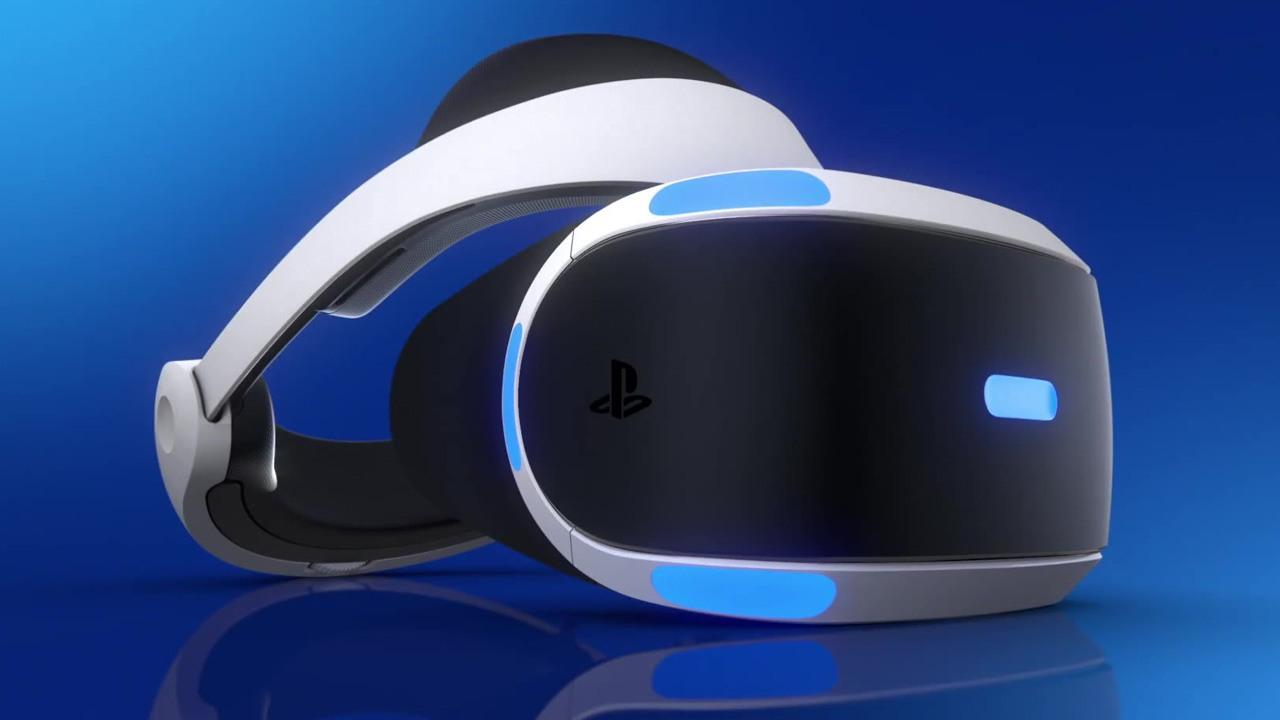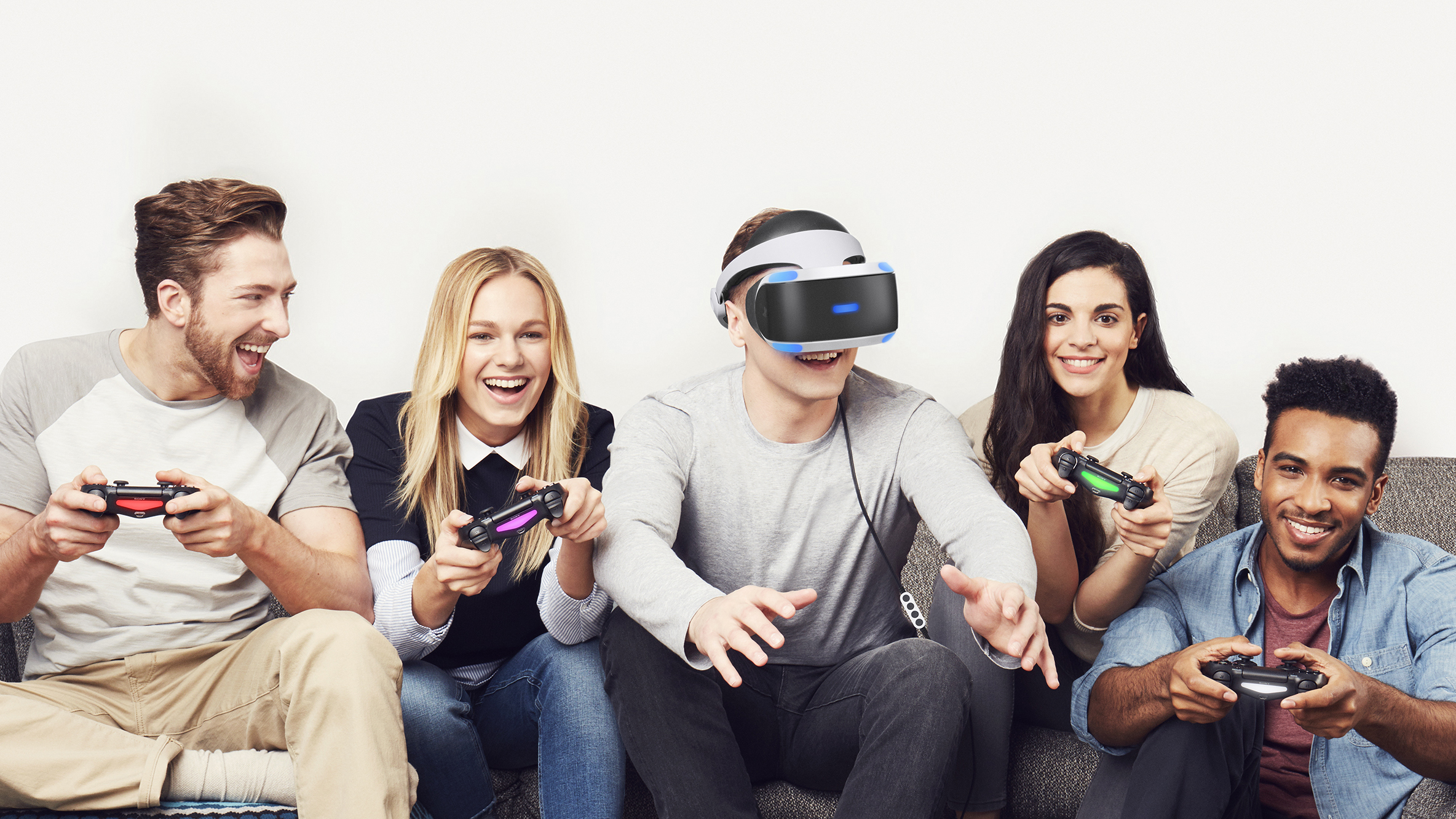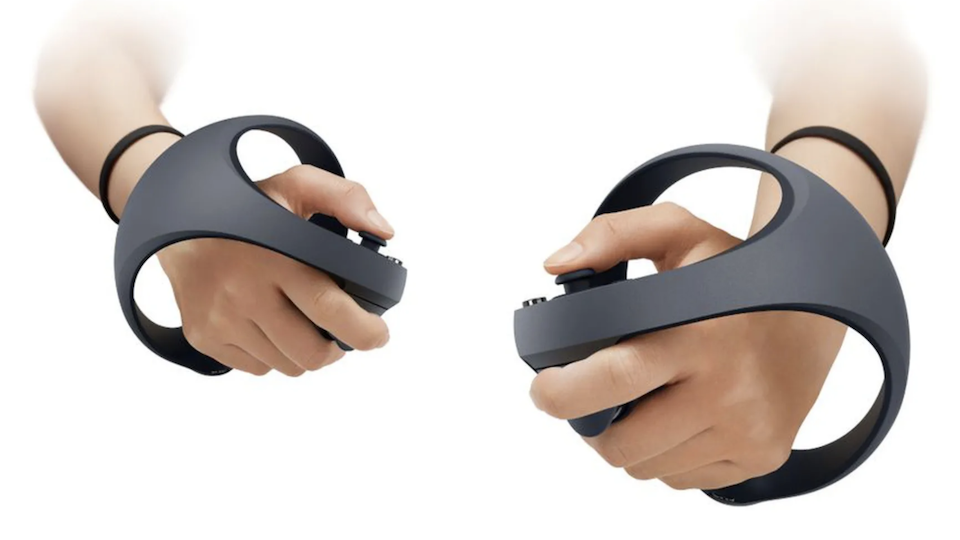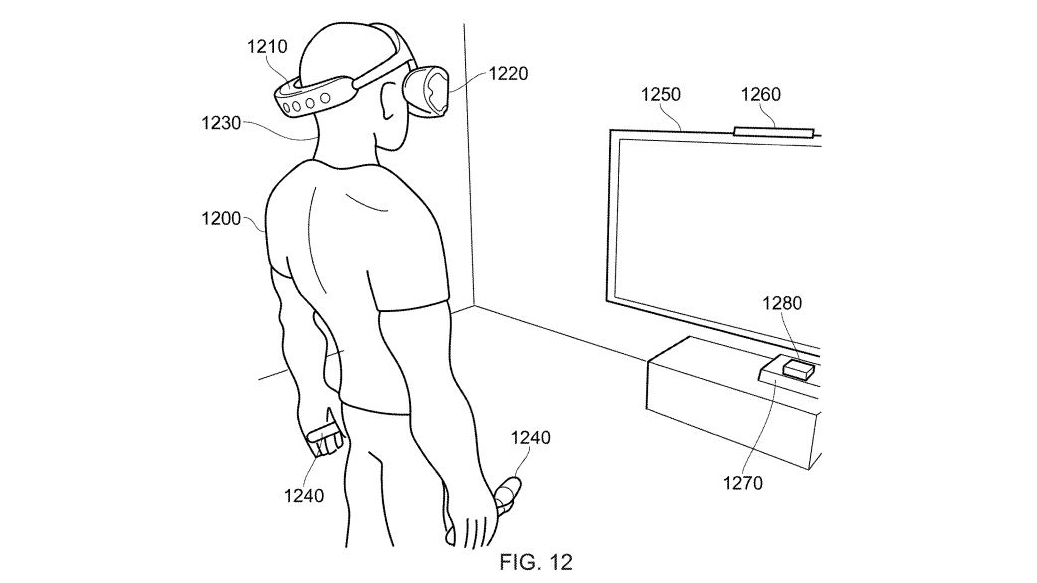Sony has officially confirmed the PSVR 2 is on its way. This latest-gen VR headset will work exclusively with the PS5 and be the successor to the original PlayStation VR, which was launched all the way back in 2016.
In a post on the PlayStation Blog posted in early 2021, Sony announced that its new PSVR system is in development, reaffirming the brand’s commitment to VR. While Sony has yet to call it the PSVR 2 themselves - instead preferring to say it’s the company’s “next-generation of VR” - we imagine the headset will borrow the naming conventions of its consoles.
There’s no official release date yet for the PSVR 2, but Sony ruled out a 2021 release; so we suspect it might launch sometime in 2022 (perhaps in the lead-up to the holidays).
There aren’t many official details about the PSVR 2 available at the moment, but as time goes on, more news and rumors are landing. In the guide below, we cover everything we know so far about the new VR headset from Sony, including potential release dates, what the design of the headset and controllers might look like, the new games we’re looking forward to playing, the features to expect and much more.
- US-only: PS5 restock tracker
- Best PSVR games 2021: the PlayStation VR games you need to play
Technically there already is a PSVR 2 headset. In 2017 Sony released the CUH-ZVR2 as a refresh to the original that added an HDR pass-through, integrated headphones, and a smaller connective cord. Otherwise, it was practically identical so for all intents and purposes it wasn’t really a new generation of VR headset; at best it was a PSVR Pro.
Instead, the true sequel to Sony’s PSVR headset promises to provide a much greater jump in specs that will ultimately take advantage of the PS5's more powerful hardware - upping its screen resolution, pixel quality, and refresh rate as well as providing a wider field of view, and improved tracking and input.

Rumors have indicated that the PSVR 2’s OLED display will boast a total resolution of 4000 X 2040 pixels (that’s 2000 X 2040 per eye and just slightly more than the Oculus Quest 2). This display would supposedly give the PSVR 2 an 110 degree of field of view, and using a process called foveated rendering (a technique that uses gaze tracking to only render certain parts of the image) the PSVR2 could more efficiently use its and the PS5’s processing power.
In addition, rumors suggest that lens adjustment will be controlled by a dial (rather than the fixed settings in the Quest 2), gaze tracking and a motor within the headset itself that might be used for haptic feedback.
Unfortunately, we’ve heard that the PSVR 2 might not be wireless like the Oculus Quest 2. While this would let Sony put the power of your PS5 to good use to make better VR games, tethered experiences aren’t always the most convenient. At least it’s rumored to only be one cable with the PSVR 2.
Last but not least we have the PSVR 2 controllers. So far these accessories are what we know most about as Sony has already shown off how we’ll be interfacing with its headset. The PSVR 2 controllers feature baton-like handles with a plastic orb around them and will make use of the same adaptive trigger features found in the DualSense PS5 as well as haptic feedback and finger touch detection.
Cut to the chase
- What is is? The next version of PlayStation VR
- When is it out? Potentially 2022 or later
- How much will it cost? TBC - probably around the PSVR's $499 launch price
PSVR 2 release date
So far, Sony has only confirmed that the PSVR 2 won't release in 2021, but beyond that, we don’t know exactly when the VR headset will launch. Holiday 2022 seems like a likely bet, but we’ll have to wait for leaks or official confirmation to have a better idea.
Given that Sony is already struggling to output enough PS5s to meet demand, we might even see PSVR 2 launch later than 2022 to keep production pipelines focused on the console. This would give Sony more time to expand the potential PSVR 2 player base (as the new headset will be exclusive to Sony’s latest console) and would help get the sort after console in more people’s hands.
However, the latest PSVR 2 rumor is concerned with its release date, which sources suggest could be Christmas 2022 according to a report from Bloomberg.
PSVR 2 price
Right now we don’t know how much the PSVR 2 will cost but we can look at other VR headsets to get an idea of what we could expect to pay for the new hardware.

Firstly we have the current PlayStation VR starter bundle that retails for $200 / £259 / AU$420. This is slightly cheaper than the price of the hugely popular Oculus Quest 2 which typically sells for £299 / $299 / AU$479 but the PSVR Starter bundle has gone through several price reductions and is several years old.
The original price for a full PSVR bundle was $499 (£399, about AU$650) however that’s considerably more than consumers may want to pay, especially if they have already shelled out on a PS5.
However, the price tag could make sense if Sony uses premium tech. For comparison, a “premium” VR headset currently on the market is the HTC Vive Pro, which retails for $800, £800, or around AU$1,045.
We imagine that Sony will aim for a price somewhere between the original and current price for the PSVR bundle if it wants to see the PSVR 2 succeed but we’ll have to wait and see.
PSVR 2 controllers
Some of the most concrete news we have about the upcoming PSVR 2 is that its controllers will be getting a significant performance and design upgrade.
These new controllers drop the design of the classic PS Move controllers from the original PSVR and instead resemble more typical VR controllers like Oculus Quest 2's Touch controllers.
The PSVR 2 controllers will feature baton-like handles with a plastic orb around them. They also make use of the same adaptive trigger features found in the current DualSense PS5 pads. This will allow for differing tensions on any given in-game action.

They’ll also feature haptic feedback and finger touch detection, letting a game know where your digits are resting without having to press a button. According to Hideaki Nishino, head of platform planning and management at PlayStation, these features mean you’ll be able “to make more natural gestures with your hands during gameplay.”
PSVR 2 specs
The most concrete info we have on what PSVR 2 could be capable of comes from JDI’s announcement of its 3.2-inch display with 1,001ppi and 2160 x 2432 resolution.
JDI claims that this display will reduce latency to 2.2msec (compared to >18msec today), allow for 120Hz (same as the PSVR 1), and demand less processing power to achieve better image quality.
We can't guarantee that Sony will use this kind of screen in the PSVR 2 but it does use JDI’s screens for its smartphones and this new display seems perfect for VR giving it several reasons to make an appearance in the new virtual reality headset.
Of course, if the PlayStation VR 2 does go with dual displays, this will make the graphical demand for the headset much more difficult to achieve. Thankfully, the upgraded AMD Ryzen chip that Sony has implemented in the PS5 looks like it has achieved the processing power necessary to support these displays.
- How the best VR headsets stack up
PSVR 2 news and rumors
PSVR 2 could have a second screen bolted on the front
According to a patent spotted in August 2021, the PSVR 2 might have a second screen on the front of the headset.
The patent (first spotted by VR Focus) describes how an external, front-mounted display could help those watching a VR player understand what the headset wearer is seeing in real-time – that’s one way to get around the isolating VR experience and sure would add an even more cool sci-fi look to Sony's headgear.
Is Sony making inroads to social VR?
A trademark application, submitted in July 2021, suggests Sony might be considering bringing back its PlayStation Home service – an ill-fated social hangout space that was on the PlayStation 3.
Part chatroom, part Sims-like design app, PlayStation Home was closed in 2015. But the trademark hints at its return and, given the rise of social VR spaces, we wouldn’t be surprised if this is going to play a big part in Sony’s move into social gaming and virtual reality in the future.
PSVR 2 could take a step back from VR-only titles
According to a report from YouTube channel PSVR Without Parole, PSVR 2 games could shift from VR-exclusive experiences. Instead, Sony might focus on "hybrid" titles that can be played with or without a PSVR 2 headset.
The report explains that PSVR 2 compatible titles could have two versions: the more traditional TV-based experience as well as a version that works in VR. This would mean players won't have to download two versions of the game, and can essentially choose which version suits them best.
PSVR specs could be "even better" expected
The PSVR 2 could have “even better” specs than what we’ve previously heard, according to tech experts Digital Foundry.
In an episode of Digital Foundry Weekly, host and technology editor Richard Leadbetter said “we’ve seen some leaked [PSVR 2] specs and it looks good,” but went on to add that “we’ve seen some other specs which haven’t been leaked which make it look even better.”
We're still waiting to hear more about the PSVR 2's specs, but it's rumored to have a higher resolution screen than the Oculus Quest 2, a dial for lens adjustment, gaze tracking, and a motor within the headset itself that might be used for haptic feedback. It could also use OLED panels for each eye as opposed to LCD.
Haptic feedback on the horizon for PSVR 2?
A recent patent unearthed by LetsGoDigital suggests that haptic feedback could be a feature in a future PSVR headset. The patent was filed all the way back in 2016 but was only granted in November 2020 and primarily explores ways in which VR or AR headsets could be made more comfortable to wear.
The patent suggests multiple sensors - whether they’re pressure, motion, or stretch sensors - built into the headset which can send signals indicating whether or not it’s being worn properly. If the headset isn’t on right, the user might receive tips to fix it, with feedback displayed on-screen or by speech through built-in speakers.
Haptic feedback in the PSVR 2 would tie it in neatly with the capabilities of the PS5's DualSense controller but as with all patents, there’s no guarantee anything described within this one will ever make it into a product Sony releases.
Motion Sickness Reduction Patent
A patent filed in 2019 and published on WIPO in 2020 points to efforts from Sony to reduce motion sickness in what could be a PSVR 2. The patent describes “a VR sickness reduction system, a head-mounted display, a VR sickness reduction method, and a program with which it is possible to further reduce VR sickness.”
Finding that much motion sickness in VR is caused by “a difference between the movement of the viewpoint and the user’s feeling in a situation where a moving image showing the appearance from the viewpoint is displayed on the display”, the patent posits a potential solution which appears to involve vibrations or oscillations.
The patent reads “An HMD (12) is provided with a display unit (38), which is disposed in front of the eyes of a user when the user wears the HMD (12). A shaking unit (42) can shake the head of the user wearing the HMD (12).
An entertainment device (14) causes the display unit (38) to display a moving image representing a view as seen from a viewpoint. The entertainment device (14) controls the shaking of the shaking unit (42) in accordance with the acceleration condition of the viewpoint for the moving image displayed by the display unit (38). ”
The overall aim, it would seem, is to better unite what the player is seeing in the PSVR headset with what they’re feeling outside of it. Patents are never any guarantee of a final product, but this could be an insight into problems Sony is looking to overcome in any future iterations of the PSVR headset.
Could PSVR 2 be wireless?
LetsGoDigital has unearthed a patent for the next-generation virtual reality hardware that suggests that PlayStation VR 2 will be wireless, boasting built-in cameras and a transparency mode that would give you the ability to see the world around you through the headset's screens.
This patent details a virtual reality headset with three built-in cameras - two at the front and one at the back - alongside motion detection technology. If that's not enough, it looks like the PSVR 2 headset could also be wireless, and boast a built-in power supply, microphone, and its own video/audio signal source. In other words, no more plugging in headphones for sound or cables for imagery, with speakers built-in.
This is a big change from the current PSVR headset that is wired, and lacks a built-in speaker and microphone, although the actual look of the potential PSVR 2 headset doesn't look far off its predecessor if the patent proves indicative of industrial design.

Good news for glasses wearers?
According to a published patent (spotted by Upload VR), Sony is working on "prescription glasses with eye gaze tracking and electro-optical signaling to an HMD".
These Sony developed prescription glasses would be custom-designed for the wearer and gaze would be able to be detected by the VR headset via an encoded sensor. In other words, glasses-wearers could use VR much easier. We don't expect these glasses to come cheap, but the implementation of eye gaze software does mean we might see it arrive in the PSVR 2.
- Don't want to wait for PSVR 2? Here are the best PSVR deals right now
- We've listed the best PlayStation VR games out today
from TechRadar - All the latest technology news https://ift.tt/3mxT2kl





0 Comments